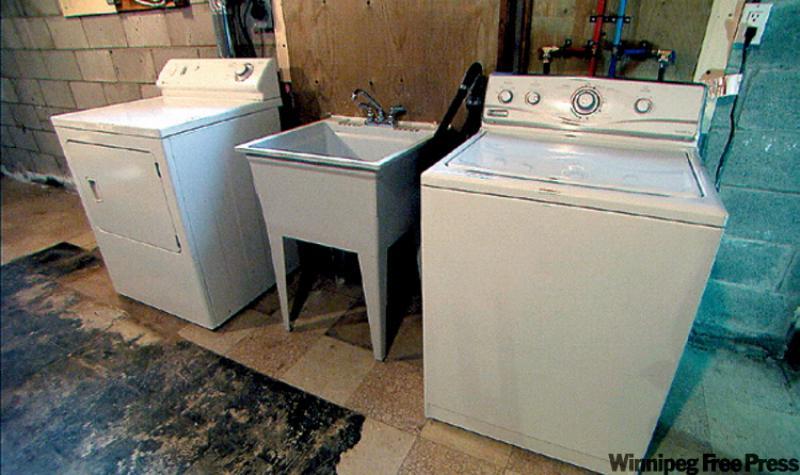Who says a renovation needs to be continuously worked on until it's finished? Renovating in stages is a simple concept that might work well for homeowners who can't afford to do the whole project at once.
But before you read this, you need to decide if you're the type of person who sees projects through to the end, or if you're someone who just can't stick to a plan. Because if you are someone who has good intentions but has left a bunch of half-finished renovations in your wake, this article will only add fuel to the fire of procrastination, and is not for you.
There is one other thing you need to know: Only certain kinds of projects should be attempted in stages, which are the non-essential rooms in your home. When it comes to completely renovating, lets say, the main bathroom or the kitchen or the roof, there's no room for messing around and prolonging the job. You need to get it done, efficiently, before you have damaged your house -- or your relationships.
But the concept of working in multiple steps works well for finishing basements, landscaping projects, or anything you can stand to live with, unfinished, for, possibly, months on end.
If you have to go one step at a time, you and your contractor will need a plan for each stage of the project. You should also have an extended schedule you can realistically stick to, but that's also flexible. This can take some of the stress off your budget, and allow your contractor to take on other jobs in the down time.
That's one advantage of working on a project and then stepping back from it, waiting for a while and then attacking it again when you have the money. Don't forget: It's only a renovation. You don't have to run yourself into the ground, racing to get it done, or borrowing more money than you can manage to pay back comfortably.
If you are too highly motivated, you can sometimes catch 'Get-it-done-itis'. It's not a bad thing to have, unless something unexpected reveals itself: knob and tube wiring, or plumbing in need of updating, or hidden structural problems that need to be fixed. If the only plan you've got is to get the renovation done in one big step, these unexpected items can't get addressed properly. Sometimes they get left undone -- which is a huge mistake, in my opinion. You're much better off stopping and re-assessing what needs to be done, even if it means delaying the finishing of your renovation for months. You never want to sacrifice safety for looks. Don't let your renovation become some kind of race, and all the focus is on the finish line, and not necessarily making it right.
If you find yourself uncovering all sorts of unexpected extra work, or you're just overwhelmed with the scope of the project, this is the time to step back and consider doing it in stages. There's no shame in taking longer to do a renovation, if the end result means a job done right.
So what do I mean by stages? Let's take the example of a laundry-room renovation. The project can be broken into manageable steps that allow for work to stop at logical places, and then easily start again at the beginning of the next step. It might take six months to get through all 10 stages, and the function of the laundry operation was never interrupted. Because the project was spread out over half a year, all the costs were also made more manageable.
Ten stages for this one project:
1. Demolition: removing old drywall on walls and ceiling and non-structural framing, and bin disposal
2. Insulation and reframing: installing Rigid foam insulation and new stud walls
3. Wiring and plumbing updating: done by licensed trades, with all necessary permits. Repositioning copper pipes and electrical outlets
4. Drywall and mudding, including building bulkheads around HVAC ductwork
5. Priming and painting walls
6. Installing vinyl flooring
7. Installing new appliances, utility tub and faucets
8. Installing drop ceiling and light fixtures
9. Painting and installing baseboards and trim
10. Installing laundry cupboards
And having a plan that's flexible can allow for unexpected delays. In the case of this project, if there are several unexpected steps, and corresponding costs, like if the existing plumbing and wiring need to be updated, the licensed trades are able to do this work in just a day, without interrupting the laundry. But raising the funds to cover the extra costs might add several weeks to the planned finished date.
The delivery of the new appliances has to be co-ordinated with the date for after the installation of the new flooring. This is important, so the new laundry machines won't require moving after they're put in place. Whatever the project, try to make sure the stages don't overlap, and make more work for your contractor by repeating steps. You and your contractor have to be in agreement and work well together to tackle a project in stages.
The other big part of this approach to take into account is the other people who live in the house. Can they live in a construction zone for a long period of time? Some people find it stressful living in a work-in-progress zone and, frankly, I rarely recommend it. So, before undertaking a renovation in stages, make sure everyone in the household is on board with the plan.
Catch Mike in his brand-new series, Holmes Inspection, airing Thursdays at 8 p.m. ET/PT on HGTV. For more information visit www.hgtv.ca.
-- Canwest News Service




